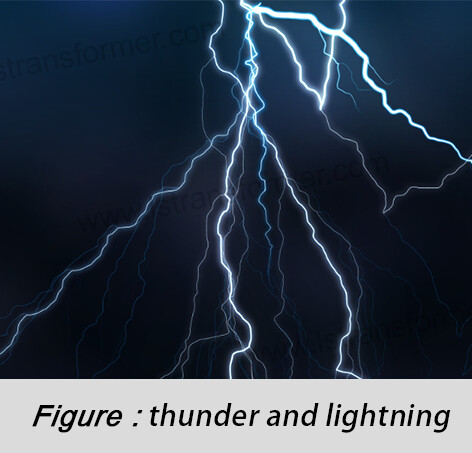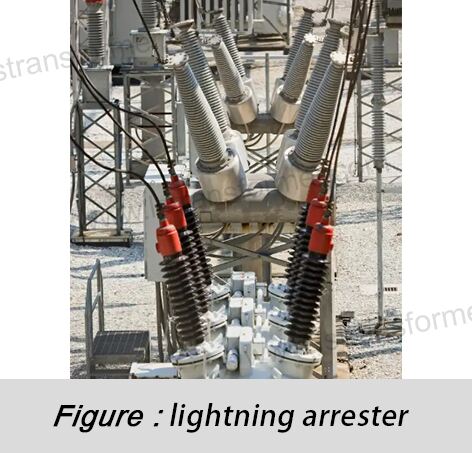Lightning and Surge Protection:Innovations in Transformer Insulation Technology
In the context of the accelerating global interconnection of power grids, transformers—as core equipment for energy transmission—face severe challenges related to lightning strikes and surges (transient overvoltages). According to data from the International Energy Agency (IEA), transformer failures caused by lightning strikes result in annual economic losses exceeding $5 billion USD, with tropical regions (e.g., Southeast Asia, Africa) accounting for 60% of these losses.
To address this challenge, international standards (such as IEC 60076 and IEEE C62.41) are continuously updated, driving innovations in insulation materials, structural design, and monitoring technologies. This article explores how transformer protection can be enhanced through technological advancements, focusing on three key dimensions: damage mechanisms, material innovation, and protective design.
Content
1. Damage Mechanisms of Lightning Strikes and Surges
●Transient Overvoltage and Electric Field Distortion
Lightning strikes or switching operations generate transient overvoltages (with peaks reaching hundreds of kilovolts), leading to severe electric field distortion in transformer windings. According to Maxwell’s equations ( E=−∇V ), the electric field strength E is proportional to the voltage gradient ∂V/∂X. When the local field strength exceeds the breakdown threshold of insulation materials (e.g., 20-30 kV/mm for epoxy resin), the insulation layer gradually carbonizes due to partial discharge. For example, a typical 8/20μs lightning current pulse can generate plasma channels exceeding 5,000°C in insulating oil, directly eroding solid insulation materials.
●Thermal-Electrical Coupling Accelerates Insulation Aging
During long-term operation, insulation paper and mineral oil undergo chemical degradation due to the combined effects of electric fields and temperature. The Arrhenius equation quantifies the impact of temperature on aging rates: τ=A * e−Ea/(R⋅T)where τ is insulation lifespan and T is absolute temperature.
When oil temperature rises from 70°C to 90°C, the insulation lifespan shortens to one-fourth of its original value. If surge overvoltage exceeds 200% of the rated voltage, aging accelerates further, reducing insulation strength by over 40%.
2. Material Innovation: From Research to Application
●Breakthroughs in Nanocomposite Insulation
Traditional epoxy resin has a low dielectric constant (εr ≈ 4.5), making it prone to corona discharge under strong electric fields. By adding nano-alumina (Al2O3), composite materials form a dense microstructure that blocks discharge channels. For instance, adding 5% nanoparticles increases partial discharge inception voltage by 30% and extends lifespan to twice that of traditional materials.
●Key Technological Innovations:
(1)Synthetic Ester Insulating Oil:Replaces mineral oil with fatty acid esters (compliant with IEC 61099), improving dielectric strength by 20% and offering a flash point of up to 316°C. Ideal for high-fire-risk applications like data centers.
(2)Biodegradable Cellulose Insulation:Bio-based insulation paper developed by Siemens enhances tear resistance by 50% in humid environments and reduces carbon emissions by 30%.
●High-Temperature Superconducting (HTS) Windings:Materials like yttrium barium copper oxide (YBCO) exhibit near-zero resistance in liquid nitrogen (77K), eliminating eddy current losses.
SuperPower’s tests show that HTS transformers reduce lightning-induced overcurrent by 60% during a 10kA strike and require no additional cooling systems. Despite costing five times more than copper windings, HTS technology is scalable in high-end applications like offshore wind farms.
3. Optimized Protection Design and Smart Monitoring
●Gradient Insulation and Multi-Layer Shielding
Modern high-voltage transformers use gradient insulation with alternating oil-paper barriers. By layering materials with varying dielectric constants, maximum field strength is reduced from 5-8 kV/mm to below 3 kV/mm.
Example:Siemens Energy’s 400kV transformer combines a Faraday cage shield (ground resistance ≤1Ω) with internal electrostatic screens, increasing lightning impulse withstand voltage (LIWV) from 1800kV to 2400kV.
●Smart Surge Arresters and Predictive Maintenance
The nonlinear behavior of zinc oxide (ZnO) surge arresters is modeled as: I=K * Vαwhere α ≥ 50 for high-quality ZnO ensures surge response within 100ns. Integrated with online monitoring systems (e.g., Hubbell SurgeTrack™), real-time analysis of resistive-capacitive current ratios detects arrester degradation. Ratios exceeding 15% (per IEC 60099-5) trigger automatic alerts, shifting maintenance from scheduled replacement to on-demand servicing.
4. International Standards and Regional Practices
●IEC and IEEE Standard Upgrades
IEC 60076-11 (dry-type transformers) and IEEE C62.22 (surge protection) unify testing requirements. Transformers must withstand both 1.2/50μs lightning waves and 250/2500μs switching surges, with test voltages adjusted for altitude and humidity (e.g., voltage tolerance decreases by 8-10% per 1,000m altitude gain).
●Enhanced Protection for Tropical Regions
For high-lightning areas like Southeast Asia (≥100 thunderstorm days/year):
(1)Insulation Level:Basic lightning impulse level (BIL) exceeds IEC standards by 15-20%.
(2)Grounding Systems:Ring-type grounding grids combined with deep-well electrodes ensure impulse impedance ≤5Ω. Thailand’s EGAT grid reduced lightning failures by 75% after retrofitting.
Comparison of Lightning Protection Solutions
Solution Type | Traditional Solution | Enhanced Solution | International Standard |
BIL | 1800kV | 2100-2400kV | IEC 60076-11 |
Ground Resistance | ≤10Ω | ≤5Ω (grid + deep well) | IEEE 80 |
Annual Failure Rate | 1.2 | 0.3 | IEEE C62.41 |
Region | Temperate (<50 thunderstorm days/year) | Tropical (≥100 thunderstorm days/year) | Custom regional standards |
In Summary
Advancements in lightning and surge protection reflect the convergence of material science, electrical engineering, and smart sensing. From nanocomposites enhancing dielectric properties to HTS technology overcoming traditional design limits, and predictive maintenance enabled by intelligent monitoring, each innovation is grounded in quantitative models (e.g., Arrhenius equation, nonlinear V−I characteristics). For international stakeholders, selecting solutions compliant with IEC/IEEE standards and tailored to regional climates (e.g., tropical BIL enhancements) is key to ensuring grid resilience. As biodegradable insulation and quantum sensing mature, transformer protection will enter an era of "self-healing" and "zero-delay response".
References: IEC 60076, IEEE C62.22, ABB, Siemens Energy, and the Journal of High Voltage Engineering (2023). For regional solutions or technical whitepapers, contact our Global Technical Support Center.
Contact Us
LuShan, est.1975, is a Chinese professional manufacturer specializing in power transformers and reactors for 50+ years. Leading products aresingle-phase transformer, three-phase isolation transformers,electrical transformer,distribution transformer, step down and step up transformer, low voltage transformer, high voltage transformer, control transformer, toroidal transformer, R-core transformer;DC inductors, AC reactors, filtering reactor, line and load reactor, chokes, filtering reactor, and intermediate,high-frequency products.
Our power transformers and reactors are widely used in 10 application areas: rapid transit, construction machinery, renewable energy, intelligent manufacturing, medical equipment, coal mine explosion prevention , excitation system, vacuum sintering(furnace), central air conditioning.
Know more about power transformer and reactor :www.lstransformer.com.
If you would like to obtain customized solutions for transformers or reactors, please contact us.
WhatsApp:+86 17267488565
Email:sales@hnlsdz.com

 EN
EN
 FR
FR DE
DE ES
ES


